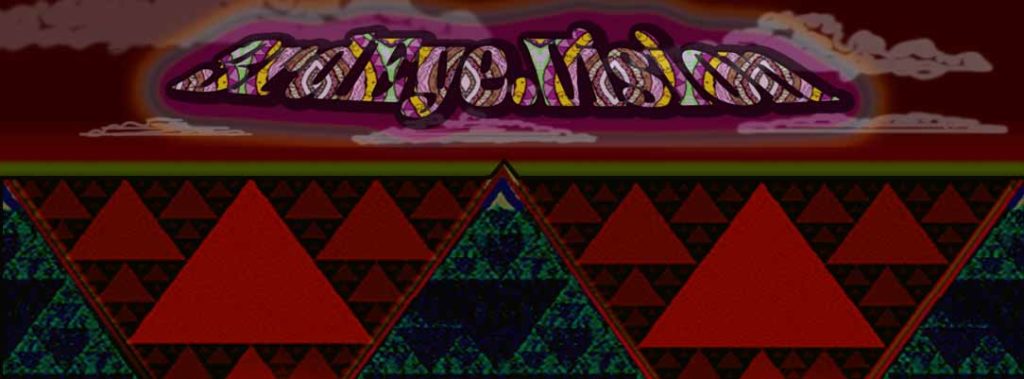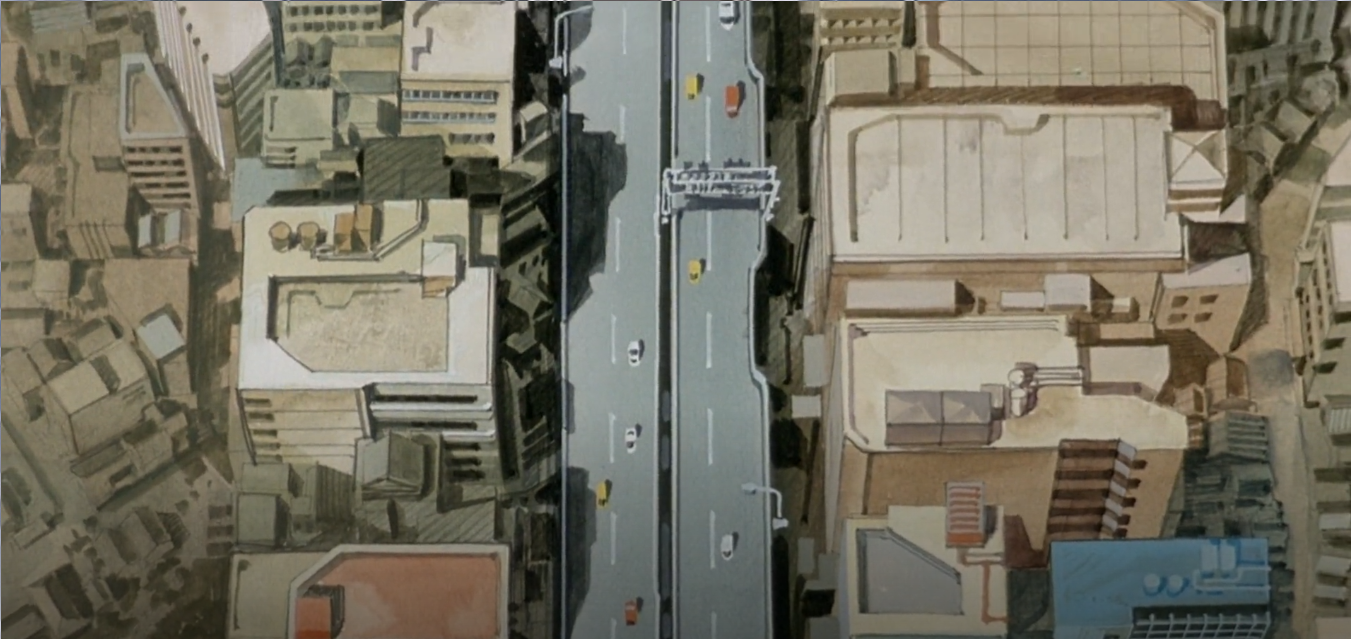
In the desolate wasteland of Neo-Tokyo (New-Tokyo), where corruption, riots, filth, terrorism, and gang violence reign, survival is a daily struggle. However, there is an even more sinister evil lurking.
The Orwellian government conducts experiments on children with psychic abilities, known as the Espers, and maintains control by means of isolation, surveillance, and medical oppression.
Amidst this dystopian world, the film Akira offers a visionary perspective into parapsychology. While begging the questions: What would you do if you had these superpowers? Would you use those powers to create responsibly or violently for vengeance? Would you have the restraint to abstain from using it, if there was a danger that you could destroy everything?
“I am large, I contain multitudes.” – Walt Whitman
The film proposes that within human beings their are dormant psychic abilities, telekinetic powers and latent inner strength that can emerge when forced to evolve. The espers are endowed with such powers. But excessive use causes them to lose control unleashing destructive forces.
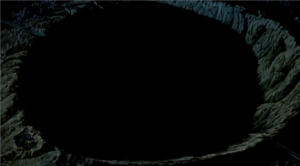
It’s 1988, as the film begins, we see old Tokyo being suddenly consumed by an explosion that fills the screen with eerie, blurred, grayish white light. The aftermath of the catastrophic event is revealed as we fade into a desolate wasteland, where a massive crater is seen as the camera slowly zooms in. The bleakness of the scene mirrors the deep darkness and sense of dismal emptiness felt by the inhabitants of the aftermath.
Something erased all of Tokyo. What kind of force could cause this? Was it a bomb? No. It was one of the Orwellian governments parapsychology experiments gone wrong. The mind’s powers are here shown to be both creative and destructive.
Syzygy
Carl Jung’s idea of a Syzygy, represents the union of the conscious and unconscious mind as well as the anima and animus. We are forced to consider that our own minds have a spectrum of good and evil.
We can’t just be good or evil, we are both. How we are labeled in this regard is a matter of the final average. We are the Syzygy for creation and destruction. Everyone must find the balance within these poles, within their own mind.
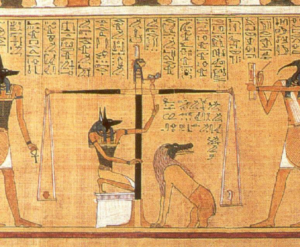
In Egyptian mythology, it was believed that after a person died, their heart would be weighed against the feather of Ma’at, who was the goddess of truth and justice.
The feather was considered to be the exact measure of right and wrong. The heart, was believed to be the seat of emotions and thoughts. Negative emotions such as anger, envy, hate, or other concerns where thought to weigh the heart down.
If a persons heart weighed more than the feather they where deemed unworthy of entering paradise. Only the lighthearted could enter heaven.
“The gods themselves contend in vain.” -Schiller
Later, we are introduced to the Esper Kiyoko, lying on a pink bed in a large, dark, and empty auditorium. The contrast between the warm tone of the bed and the cold, bluish, shadowy auditorium creates a sense of unease.
As the camera pans left, we see that Kiyoko has the face of an elderly lady, adding to the surreal atmosphere. Beside the bed, a man called Doctor Onishi operates a medical computer device that beeps as it churns out information .
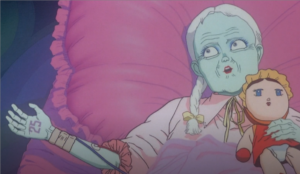
She reaches out to Colonel Shikishima revealing her arm attached to an IV the number 25 tattooed on the palm of her hand. She says,
“I had a dream. Akira came to visit us again. The whole city was destroyed. Many people, they all began to die.”
The doctor reply’s, “We’ve seen this before…”
Despite the government’s control over the experiments, they were unable to prevent the destruction of Tokyo.
Hidden Powers Of The Mind
The mind and its hidden powers can be uncontrollable. If these powers were turned outward, they could become a dangerous and destructive force.
Anyone who has tried to quiet their thoughts in meditation knows how challenging it can be to control the mind. Despite our best efforts, we may be flooded with random thoughts and concerns.
But what if these uncontrollable powers were unleashed in moments of frustration or anger, causing explosions or even bringing about our malicious wishes for others?
And if this were to happen, would we be held responsible for the consequences? 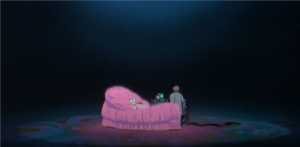
The questions raised urge us to contemplate the potential hazards of the mind’s real powers. The concept of manifestation is not unlike para-psychological phenomena such as clairvoyance and telekinesis. All three are rooted in the idea of using the mind’s power to affect exterior reality in some way.
Manifestation
Manifestation is the process of consciously creating one’s reality by translating thoughts, emotions, and desires into tangible experiences and circumstances.
Clairvoyance is the ability to gain information about an object or event without using the known senses, such as in the use of remote viewing. Telekinesis is the ability to affect physical reality subtly or directly with one’s mind.
All three concepts involve the minds innate ability to affect the physical world in mysterious ways.
Further along, we find Tetsuo lying in a hospital bed, having gained telekinetic abilities. He struggles with bizarre hallucinations: a tiny, anthropomorphic rabbit and bear, and a hot rod that walks on its tires as if it were a four-legged animal, all parade single-file on the surface of his bed. They climb over his pillow as if scaling a cliff, all the while humming an eerie polyphonic melody.
Tetsuo ultimately ignores the warnings of the Espers and Kei, who caution him against excessive use of The Power, as it may lead to him losing control over it.
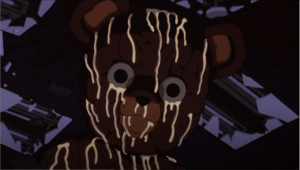
Later, as Tetsuo loses control, he begins to transform into a grotesque amalgamation of biological matter and machine parts. His screams of agony accompany the sight of his body boiling over like liquid, constantly morphing into monstrous forms. The blob rapidly grows and expands, engulfing everything in its path.
Tetsuo’s outward fury has now turned inward, and his anguish is expressed through the transformation. At one point as he begs for help, he takes on the form of a giant biological blob baby, but he cannot hold it. His flesh melts away, leaving the rest of his body resembling a clump of playdough.
Deliberate Creation
Tetsuo’s situation is ironic because he arrogantly ignored the Espers’ warnings, but now he finds himself in a desperate situation where he begs for their help. Like a child who ignores warnings not to touch a hot stove and suffers the consequences.
The scene can be a metaphor highlighting the perils of unbridled power and the significance of exercising self-restraint. it could symbolize the possible outcomes of giving into detrimental emotions and bad moods.
Moreover, it illustrates that responsibly creating one’s reality from a healthy frame of mind is spiritually mature; Manifestation is conscious, deliberate creation.
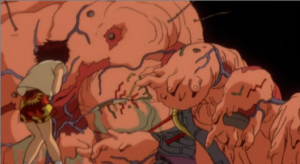
In conclusion, Akira presents a thought-provoking view of the hidden powers of the mind and the potential dangers. The film asks us to consider what we would do if we possessed such abilities and whether we would use them for good or ill.
It highlights the importance of restraint in the face of power, as well as the devastating consequences of losing your cool.
The film demonstrates the complexity of the human mind and the importance of understanding the power of our states and the moods that we manifest from.
It challenges us to think deeply about responsible and deliberate creation, and how our thoughts can shape our reality.
